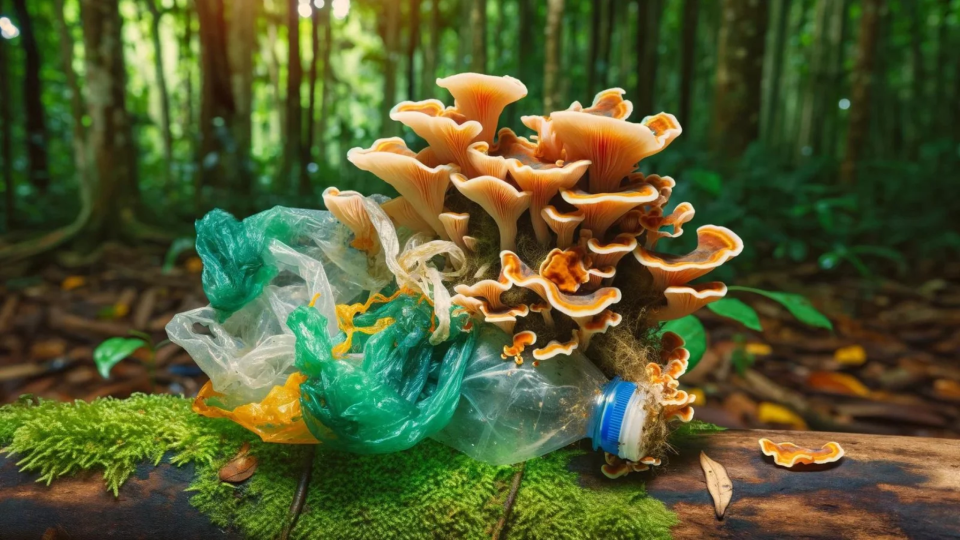This Plastic-Eating Fungus Could Revolutionize How We Tackle the Global Waste Crisis
In one of the planet’s most biodiverse ecosystems — the Amazon rainforest — scientists have made a discovery that could change the future of our fight against plastic pollution. Deep within this lush, dense terrain, they uncovered a seemingly ordinary organism with an extraordinary ability: it can digest plastic.

The fungus, known as Pestalotiopsis microspora, is anything but ordinary. What sets it apart from other fungi is its unique talent for consuming polyurethane, a plastic commonly used in everyday items such as insulation, tires, and synthetic fabrics. But the true marvel? This fungus can thrive in oxygen-free environments — such as those found deep within landfills — and still continue breaking down plastic materials.
This means that Pestalotiopsis microspora could potentially offer a powerful biological solution to one of the world’s most stubborn environmental challenges.

The Plastic Problem We’re All Facing
Plastic pollution is not just a localized issue — it’s a global crisis. Over 300 million tons of plastic are produced every year, and a significant portion of it ends up in oceans, rivers, and landfills. These plastics do not decompose easily; instead, they persist for hundreds of years, breaking down into smaller microplastics that infiltrate food chains, water supplies, and even the human body.
Despite advances in recycling and waste management, current systems remain inadequate. Many types of plastic, especially polyurethane, are difficult to recycle and often get incinerated or dumped in landfills.
This is where Pestalotiopsis microspora could make a major difference.
Nature’s Own Bioremediation Tool
Bioremediation is a process in which living organisms are used to remove or neutralize pollutants from a contaminated site. While bacteria have long been used for this purpose — such as oil-eating microbes used after oil spills — fungi have recently entered the spotlight for their potential in environmental cleanup.
Pestalotiopsis microspora was first identified by researchers from Yale University during a scientific expedition to Ecuador. They discovered that not only could this fungus survive on polyurethane, but it could also do so in anaerobic (oxygen-free) conditions. This means it can thrive where most other organisms cannot — including deep within waste-filled landfills or polluted underwater environments.
Researchers have since been exploring ways to cultivate this fungus on a larger scale, with the goal of introducing it into environments heavily polluted with plastic. In controlled laboratory settings, the fungus has demonstrated its ability to significantly degrade polyurethane within a matter of weeks — a feat traditional recycling methods can’t match.
Imagining the Future: A World Without Persistent Plastic
If successfully harnessed, Pestalotiopsis microspora could be used in everything from municipal waste treatment plants to ocean-cleanup missions. Instead of shipping plastic waste across the globe for inefficient recycling, contaminated landfills could one day be seeded with this fungus, accelerating the decomposition process from centuries to mere weeks or months.
Even more exciting is the potential for this discovery to inspire a broader range of biological solutions. Scientists believe this is only the beginning — there may be other organisms in the natural world with similar or even greater abilities to degrade toxic materials. The challenge lies in identifying them and learning how to responsibly apply their capabilities at scale.
The discovery also prompts a humbling reminder: the natural world has long held solutions to the problems we’re only now beginning to address. It’s not always about inventing something new — sometimes it’s about listening to what nature has already created.
Sustainable Hope in the Midst of a Global Crisis
While it will take time before this fungus is used on a large industrial scale, its discovery marks an inspiring step forward in sustainable science. It also shifts the conversation around waste from despair to hope — a much-needed emotional pivot in the broader environmental narrative.
The next generation of environmental innovations may not come from a laboratory or high-tech startup, but from the forest floor, where tiny life forms have evolved for millions of years to adapt, recycle, and survive.
As the urgency to tackle plastic pollution grows, the spotlight now turns to the natural world — and to unsung microscopic heroes like Pestalotiopsis microspora.